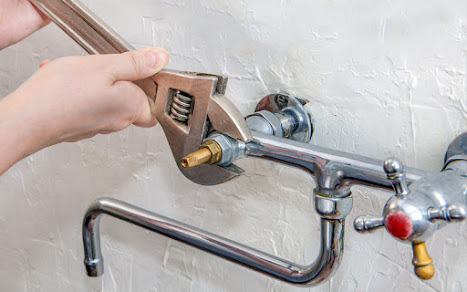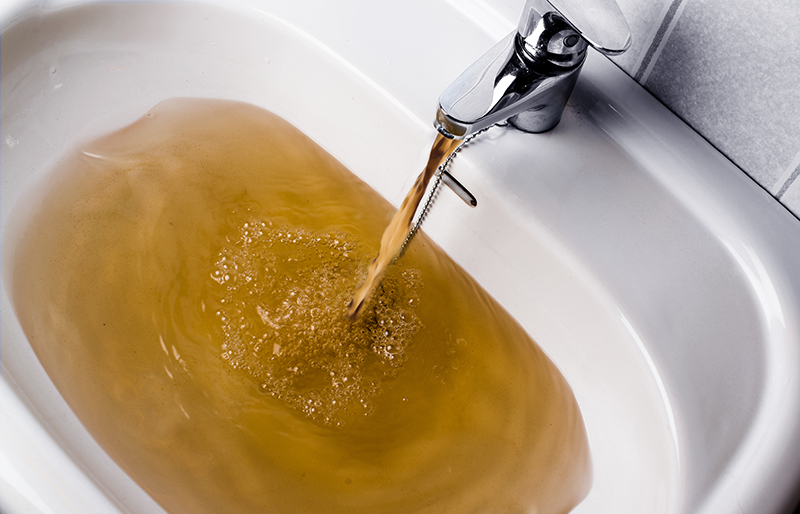Presented here in the next paragraph you'll find additional good quality information in regards to Diagnose Unwanted Plumbing Noises.

To identify loud plumbing, it is important to determine first whether the unwanted noises happen on the system's inlet side-in various other words, when water is turned on-or on the drain side. Noises on the inlet side have actually differed reasons: too much water stress, worn valve as well as tap components, poorly connected pumps or other home appliances, improperly put pipeline fasteners, as well as plumbing runs having too many tight bends or various other constraints. Noises on the drain side normally originate from poor place or, similar to some inlet side sound, a layout including limited bends.
Hissing
Hissing noise that takes place when a tap is opened slightly typically signals extreme water stress. Consult your neighborhood water company if you suspect this issue; it will have the ability to inform you the water stress in your area and can set up a pressurereducing shutoff on the inbound water pipeline if essential.
Thudding
Thudding sound, often accompanied by shuddering pipelines, when a tap or device shutoff is switched off is a problem called water hammer. The sound as well as vibration are triggered by the resounding wave of stress in the water, which instantly has no location to go. Often opening up a shutoff that releases water swiftly right into an area of piping having a constraint, arm joint, or tee fitting can produce the very same problem.
Water hammer can normally be cured by mounting installations called air chambers or shock absorbers in the plumbing to which the problem valves or taps are attached. These gadgets permit the shock wave developed by the halted circulation of water to dissipate airborne they have, which (unlike water) is compressible.
Older plumbing systems might have brief upright sections of capped pipe behind walls on faucet competes the very same function; these can eventually loaded with water, decreasing or destroying their efficiency. The cure is to drain pipes the water supply totally by shutting off the major water system shutoff as well as opening up all taps. Then open up the main supply shutoff and shut the faucets individually, beginning with the faucet nearest the shutoff as well as ending with the one farthest away.
Babbling or Shrieking
Intense chattering or shrilling that occurs when a shutoff or faucet is activated, and that normally vanishes when the fitting is opened completely, signals loosened or faulty internal components. The solution is to change the valve or faucet with a brand-new one.
Pumps as well as home appliances such as cleaning devices and dish washers can transfer electric motor noise to pipelines if they are incorrectly attached. Link such items to plumbing with plastic or rubber hoses-never stiff pipe-to isolate them.
Other Inlet Side Noises
Creaking, squealing, scratching, breaking, and touching usually are brought on by the expansion or tightening of pipes, normally copper ones supplying hot water. The audios happen as the pipelines slide against loosened bolts or strike close-by residence framing. You can usually pinpoint the place of the trouble if the pipes are revealed; just comply with the audio when the pipes are making sounds. Most likely you will find a loosened pipe wall mount or an area where pipes exist so close to floor joists or various other mounting pieces that they clatter versus them. Affixing foam pipe insulation around the pipelines at the point of call ought to correct the trouble. Be sure bands and also hangers are protected and also provide sufficient assistance. Where feasible, pipe fasteners need to be attached to enormous architectural components such as structure wall surfaces instead of to framing; doing so minimizes the transmission of resonances from plumbing to surfaces that can enhance and transfer them. If affixing bolts to framing is unavoidable, wrap pipelines with insulation or various other resistant material where they get in touch with fasteners, and also sandwich completions of brand-new bolts in between rubber washers when installing them.
Remedying plumbing runs that suffer from flow-restricting tight or many bends is a last resort that ought to be embarked on just after speaking with a proficient plumbing service provider. Unfortunately, this situation is relatively usual in older residences that may not have been developed with interior plumbing or that have actually seen numerous remodels, especially by amateurs.
Drainpipe Noise
On the drainpipe side of plumbing, the principal objectives are to get rid of surfaces that can be struck by falling or rushing water and also to shield pipelines to consist of inevitable sounds.
In new construction, bath tubs, shower stalls, bathrooms, as well as wallmounted sinks and containers must be set on or against resilient underlayments to reduce the transmission of audio with them. Water-saving bathrooms and also faucets are less noisy than conventional models; mount them as opposed to older kinds even if codes in your location still permit using older fixtures.
Drains that do not run up and down to the cellar or that branch into straight pipe runs sustained at flooring joists or other mounting existing specifically problematic sound issues. Such pipelines are big enough to radiate significant vibration; they also carry significant amounts of water, that makes the scenario even worse. In new construction, define cast-iron dirt pipes (the large pipes that drain pipes bathrooms) if you can afford them. Their enormity has a lot of the noise made by water passing through them. Additionally, avoid directing drainpipes in walls shared with rooms and also areas where people gather. Walls containing drains ought to be soundproofed as was explained previously, utilizing double panels of sound-insulating fiberboard and also wallboard. Pipelines themselves can be wrapped with special fiberglass insulation created the objective; such pipelines have an impervious vinyl skin (occasionally consisting of lead). Results are not constantly adequate.
WHY IS MY PLUMBING MAKING SO MUCH NOISE?
This noise indeed sounds like someone is banging a hammer against your pipes! It happens when a faucet is opened, allowed to run for a bit, then quickly shut — causing the rushing water to slam against the shut-off valve.
To remedy this, you’ll need to check and refill your air chamber. Air chambers are filled with — you guessed it — air and help absorb the shock of moving water (that comes to a sudden stop). Over time, these chambers can fill with water, making them less effective.
You’ll want to turn off your home’s water supply, then open ALL faucets (from the bathroom sink to outdoor hose bib) to drain your pipes. Then, turn the water back on and hopefully the noise stops! If you’re still hearing the sound, give us a call to examine further.
Whistles
Whistling sounds can be frustrating, as sometimes the source isn’t easily identified. However, if you can pinpoint which faucet or valve that may be the cause, you’ll likely encounter a worn gasket or washer — an easy fix if you replace the worn parts!Whistling sounds from elsewhere can mean a number of things — from high water pressure to mineral deposits. Your best plan of attack here is to give our plumbing experts a call. We’ll be able to determine where the noise is coming from and what the cause may be, then recommend an effective fix!
Cracks or Ticks
Cracking or ticking typically comes from hot water going through cold, copper pipes. This causes the copper to expand resulting in a cracking or ticking sound. Once the pipes stop expanding, the noise should stop as well.
Pro tip: you may want to lower the temperature of your water heater to see if that helps lessen the sound, or wrapping the pipe in insulation can also help muffle the noise.
Bangs
Bangs typically come from water pressure that’s too high. To test for high water pressure, get a pressure gauge and attach it to your faucet. Water pressure should be no higher than 80 psi (pounds per square inch) and also no lower than 40 psi. If you find a number greater than 80 psi, then you’ve found your problem!
Next step is to give us a call in order to install a pressure regulator. Trust us, you don’t want to wait to resolve this issue. Not only is the sound annoying, but high water pressure can be destructive to your home — including damaging certain appliances, like your washer and dishwasher.
Dripping
You might be accustom to the slow quiet drip your kitchen faucet makes. You might have even tuned out your bathroom sink dripping and drabbing all day long — but it’s time to find its cause.
A slow drip could signify a variety of easy to fix issues, such as a worn out O ring, or loose part. And by ignoring the drip, you could be wasting up to 2,000 gallons of water a year! So start conserving water — get it looked at ASAP.
https://www.pwessig.com/blog/2018/december/why-is-my-plumbing-making-so-much-noise-/

I stumbled upon that post about Diagnose Unwanted Plumbing Noises when perusing the search engines. Sharing is good. You won't know, you may be doing someone a favor. Thanks so much for taking the time to read it.
Request An Appointment
 Ashley Johnson Then & Now!
Ashley Johnson Then & Now! Heath Ledger Then & Now!
Heath Ledger Then & Now! Sydney Simpson Then & Now!
Sydney Simpson Then & Now! Nancy McKeon Then & Now!
Nancy McKeon Then & Now! Atticus Shaffer Then & Now!
Atticus Shaffer Then & Now!